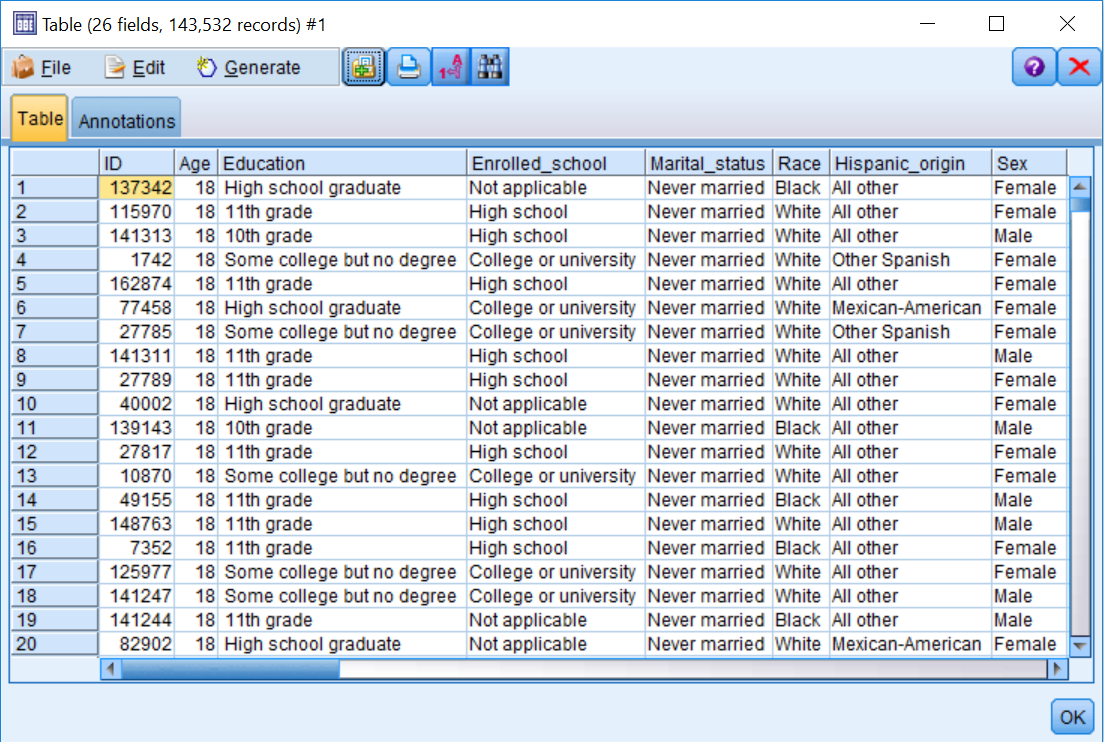At times it is useful to see if any values look unusual. The Sort node arranges cases into ascending or descending order based on the values of one or more fields. It also helps in the optimization of other nodes so that they perform more efficiently:
- Place a
Sortnode from theRecord Opspalette onto the canvas. - Connect the
Selectnode to theSortnode. - Edit the
Sortnode.
You can sort data on more than one field. In addition, each field can be sorted in ascending or descending order:
- Click on the
FieldChooserbutton. - Select
Agein theSort by:fieldbox. - Click
OK:

We will now rank the age cases in ascending order (the youngest people will be at the top of the file and the oldest people will be at the bottom of the file):
- Click
OK.
Now let's take a look at the results from the Sort node:
- Connect the
Sortnode to aTablenode. - Run the
Tablenode:

Notice that there are no longer any children in this file, as the youngest people in the dataset are 18 years old.



